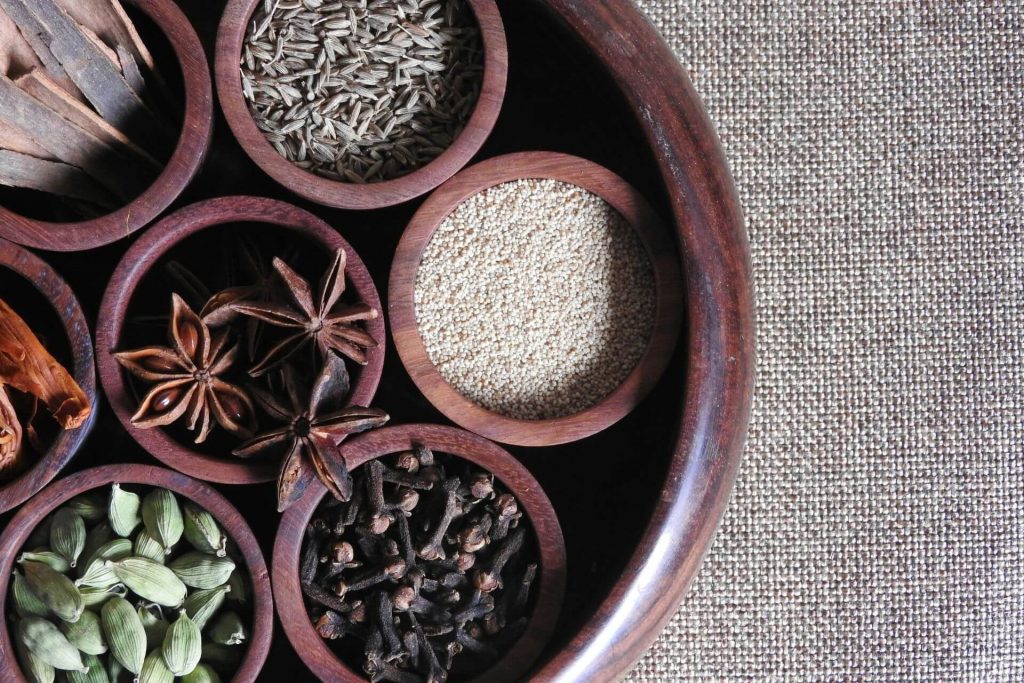What is the best Chinese Five Spice Substitute?
Are you looking for a Chinese five spice substitute? Chinese five spice is a potent blend of five spices: cloves, cinnamon, fennel seeds, Sichuan peppercorns, and also star anise. It adds a unique warmth and depth of flavor to both savory and sweet dishes alike. However, if you don’t have Chinese Five Spice on hand or can’t find it, there are several substitutes you can use, depending on the specific flavor profile you’re aiming for.
We have put together our top list of single spice substitutes and spice blend substitutes. Try using: Allspice, Cinnamon, Star Anise, Garam Masala, Garam Masala & Star Anise, Bahart, or Homemade Chinese Five Spice blend.
Remember, these are just starting points, and you may want to play around with the amounts and combinations of each substitute depending on your recipe and personal preferences. Always taste as you go and add more until you achieve the desired flavor.
What is Chinese Five Spice?
Traditional Chinese five spice typically includes star anise, cloves, Chinese cinnamon (or cassia), Szechuan peppercorns, and fennel seeds.
Now, these five components join together to create a rather tasty blend, with a touch of sweetness, hit of savory, and a hint of spice. It’s like the Spice Girls (if you remember them!) with each one bringing its own flair to the mix. Star anise delivers a licorice-like sweetness, cloves bring warmth, Chinese cinnamon adds depth, Szechuan peppercorns bring a tingling sensation, and finally fennel seeds contribute a mild, anise-like flavor.
This blend is a go-to in Chinese and other Asian cuisines, often used in marinades, rubs, and also sauces.
What can I substitute for Chinese Five Spice?
Here are some of the best ingredients to substitute the flavor and role that Chinese five spice provides in your recipes.
- Allspice
- Cinnamon
- Star Anise
- Garam Masala
- Garam Masala & Star Anise
- Bahart
- Homemade Chinese Five Spice blend
Chinese Five Spice substitutes
Allspice
Allspice is a versatile spice with a flavor profile reminiscent of a combination of cinnamon, cloves, and nutmeg. It’s derived from the dried berries of the Pimenta dioica plant, which is native to the Caribbean. The name “allspice” comes from its ability to mimic the flavors of several spices.
Whilst allspice won’t perfectly replicate the blend, it can still bring a warm and slightly sweet depth to your dishes.
Allspice Substitute for Chinese Five Spice:
It’s actually quite simple – just replace the Chinese Five Spice with an equal amount of ground allspice. Keep in mind that allspice has a strong flavor, so you might want to start with a bit less and adjust to taste.
Usage Tips:
- Baking: Allspice works well in sweet baked goods like cookies, cakes, and also pies. You can also try using it in recipes that call for Chinese Five Spice in desserts.
- Savory Dishes: For savory dishes, especially those with a hint of sweetness, allspice can be a great addition. Use it in marinades, rubs, or sauces for meats, stews, or even savory rice dishes.
- Experiment: Don’t be afraid to get creative. Mix allspice with other individual spices like cinnamon, cloves, or ginger to tailor the flavor to your liking.
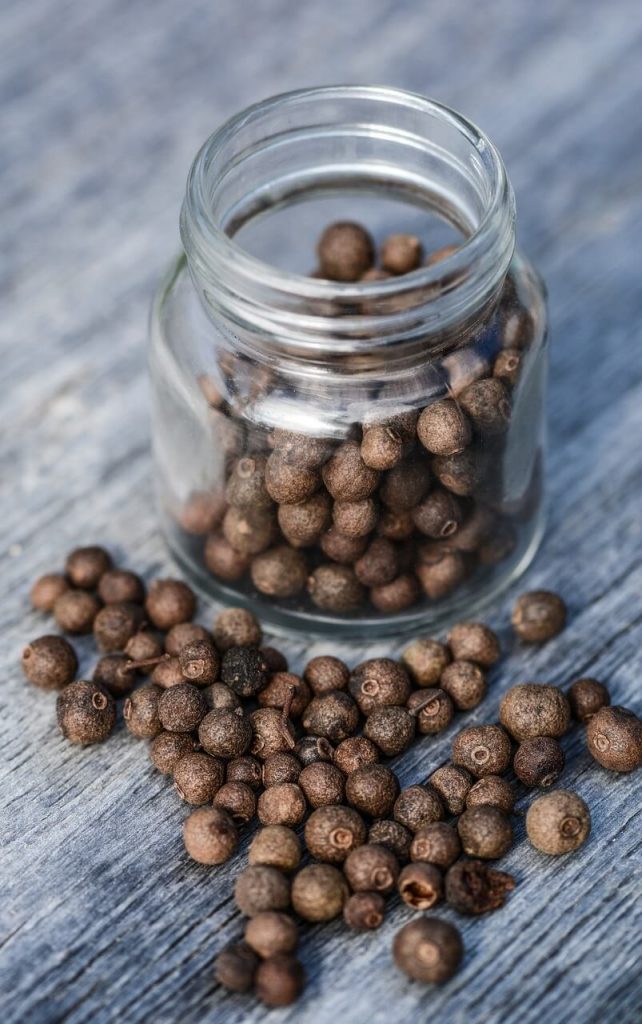
Cinnamon
Cinnamon is a spice that comes from the bark of trees belonging to the Cinnamomum genus. It has a warm, sweet flavor, with a hint of spiciness, making it a great ingredient for both sweet and savory dishes.
While cinnamon won’t perfectly replicate the complexity of the five-spice blend, it can add a delightful sweetness and warmth.
Cinnamon Substitute for Chinese Five Spice:
Replace the Chinese Five Spice with an equal amount of ground cinnamon – simple. Keep in mind that cinnamon has a distinct flavor, so the result will be a bit different, but still delicious.
Usage Tips:
- Baking: Cinnamon is a superstar in baked goods. You can use it in cookies, cakes, and pastries that originally call for Chinese Five Spice.
- Warm Beverages: Add a dash of ground cinnamon to your coffee, tea, or hot chocolate for a comforting twist.
- Oatmeal and Porridge: Why not sprinkle cinnamon on your morning oatmeal, or any hot cereal, for a cozy and aromatic breakfast.
- Spiced Fruits: Use cinnamon with fruits like apples, pears, or also peaches for a simple, yet flavorful dessert or side dish.
- Savory Dishes: Believe it or not, cinnamon can also work well in savory dishes. Try to include it in marinades for meats or in Middle Eastern and Mediterranean savory recipes.
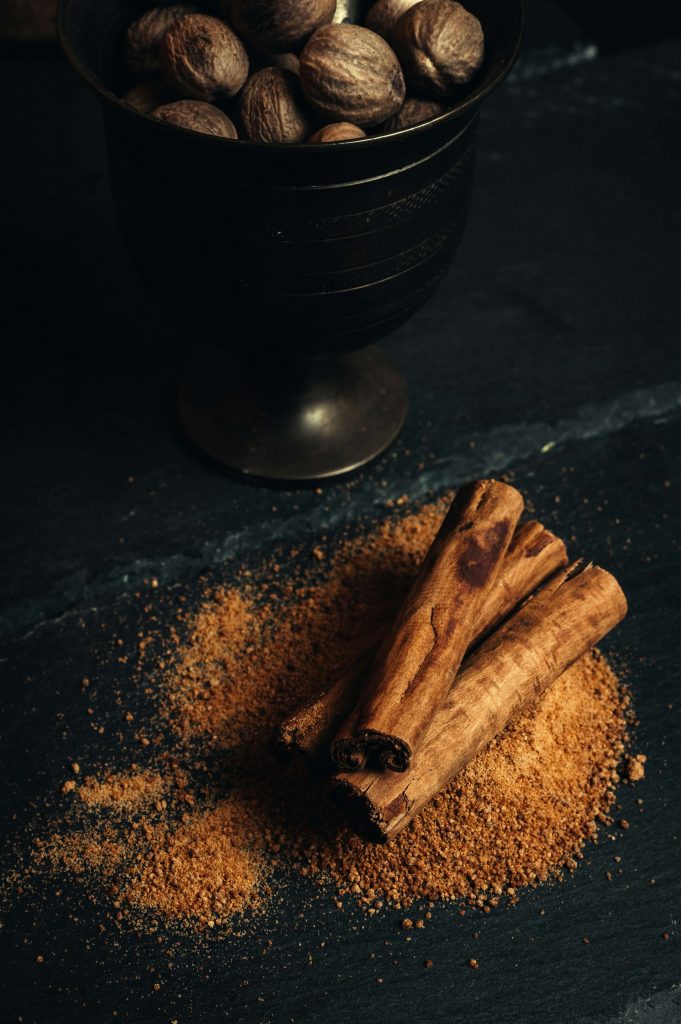
Star Anise
Star anise is a distinctive spice that comes from the fruit of the Illicium verum, which is a small evergreen tree native to China. The spice gets its name from its star-shaped appearance, and it has a flavor profile that is both sweet and licorice-like.
Since star anise is one of the key components in the traditional blend, it can add a unique depth to your dishes.
Star Anise Substitute for Chinese Five Spice:
Just replace the Chinese Five Spice with an equal amount of ground star anise. If you have whole star anise, you can always grind it into a powder using a spice grinder or mortar and pestle.
Usage Tips:
- Infusing Liquids: Drop a whole star anise or some ground star anise into soups, stews, or even sauces to infuse them with a rich, aromatic flavor.
- Tea and Beverages: Brew a cup of tea using star anise for a warm and soothing drink. It pairs well with black tea or herbal blends.
- Baking: Add ground star anise to your baking repertoire. It works particularly well in spice cookies, gingerbread, or any recipe where a hint of licorice flavor is welcome.
- Asian-Inspired Dishes: Use star anise in marinades for meats, especially in Asian-inspired recipes. It complements the flavors in braised dishes and stir-fries.
- Mulled Wine or Cider: Drop a couple of whole star anise into your mulled wine or cider for a fragrant and festive touch.
Remember, star anise has a strong and distinct flavor, so a little goes a long way.
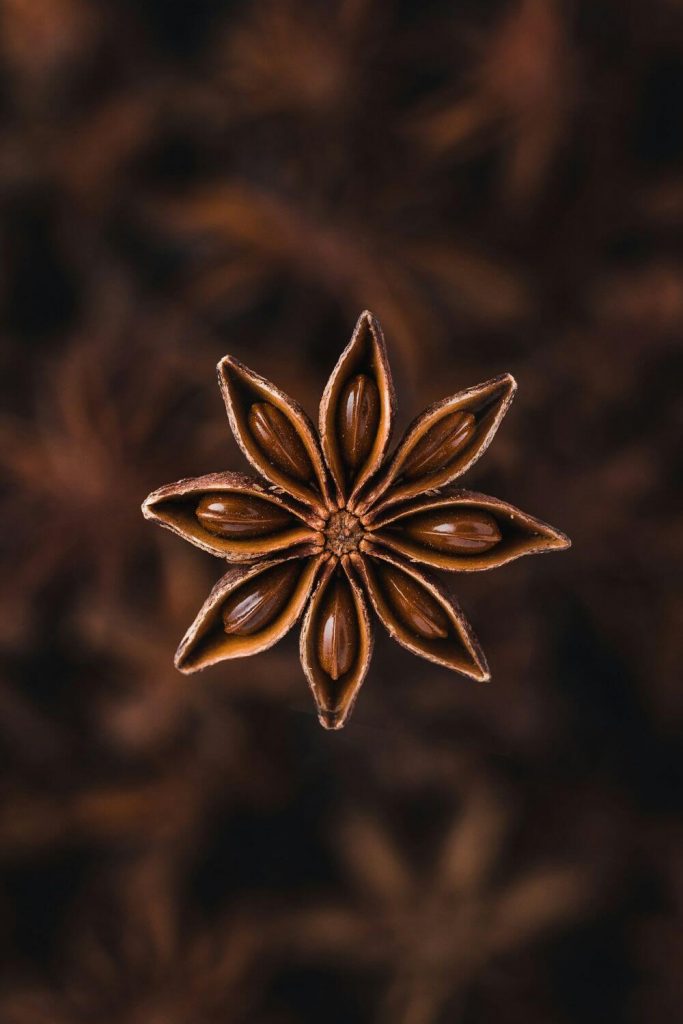
Garam Masala
Garam masala is a fragrant spice blend that originated in Indian cuisine. The name translates to “warm spice mix,” reflecting its ability to add warmth and depth to dishes. The ingredients in garam masala can vary, but generally it includes spices such as cinnamon, cardamom, cloves, cumin, and coriander.
While Garam masala is not an exact match, it can bring its own rich and complex flavors to your dishes.
Garam Masala Substitute for Chinese Five Spice:
All you need to do is replace the Chinese Five Spice with an equal amount of garam masala. Garam masala often contains cinnamon, cloves, and other spices, providing a warm and aromatic twist to your recipes.
Usage Tips:
- Curries and Stews: Garam masala is a star player in many Indian curries and stews. Why not use it in place of Chinese Five Spice for a flavor journey.
- Roasted Vegetables: Sprinkle garam masala on roasted vegetables, giving them a delightful kick and warmth.
- Grilled Meats: It works wonders as a marinade or spice rub for grilled meats. The combination of spices adds depth and complexity.
- Rice Dishes: Mix garam masala into rice dishes for a flavorful side that pairs well with various cuisines.
- Soups and Lentils: Enhance the flavor of soups and lentil dishes by incorporating garam masala during the cooking process.
Remember to adjust the quantity to suit your taste preferences, as garam masala can be bold.
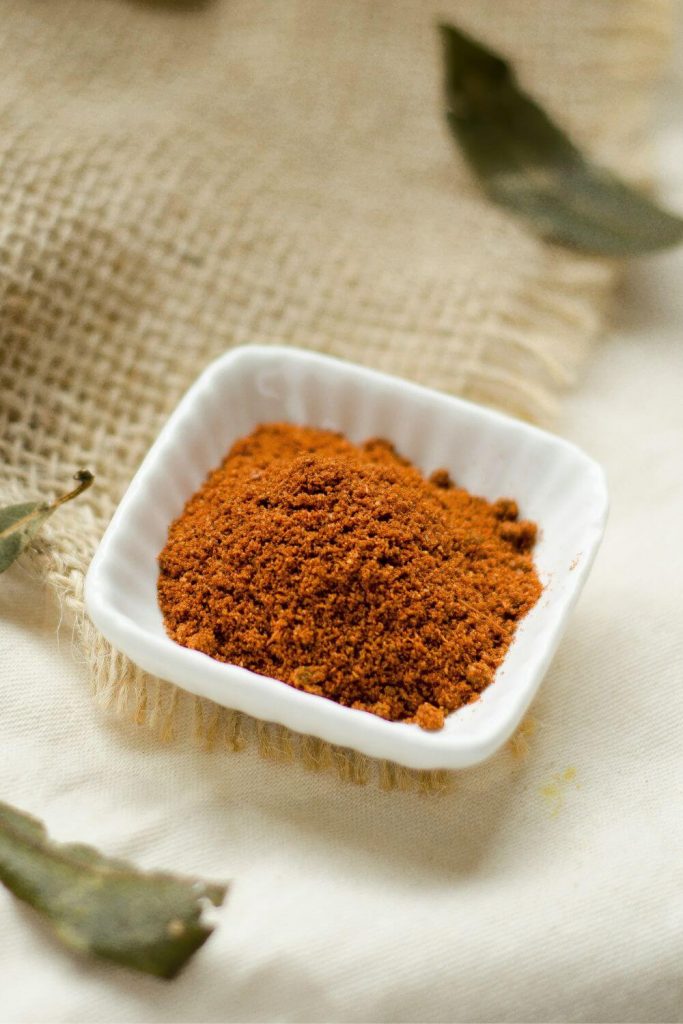
Garam Masala and Star Anise
Creating a blend of garam masala and star anise is a brilliant move for a unique and flavorful substitute for Chinese Five Spice. Here’s a simple recipe for your custom blend, and some ideas on how to use it:
Garam Masala and Star Anise Blend:
Ingredients:
- 2 tablespoons garam masala
- 1 tablespoon ground star anise
Instructions:
- In a bowl, combine the garam masala and ground star anise.
- Mix thoroughly until you have a well-incorporated spice blend.
Using the Blend as a Substitute for Chinese Five Spice:
Now that you’ve crafted your special blend, let’s explore how to use it:
- Marinades: Incorporate your garam masala and star anise blend into marinades for meats, especially those destined for grilling or roasting.
- Stir-Fries: Add the blend to stir-fried vegetables or proteins. The combination of garam masala’s depth and star anise’s unique licorice-like flavor will bring a new dimension to your stir-fry game.
- Rice and Grain Dishes: Sprinkle the blend into rice or grain dishes. It works particularly well with pilafs, biryanis, or any recipe where you’d typically use Chinese Five Spice.
- Soups and Stews: Enhance the flavor profile of your soups and stews by adding a pinch of your custom blend.
- Baking: Consider experimenting with the blend in baked goods, such as spice cookies or cakes, for a unique twist.
Remember, the beauty of cooking lies in experimentation. Start with small amounts, taste as you go, and adjust according to your preferences.
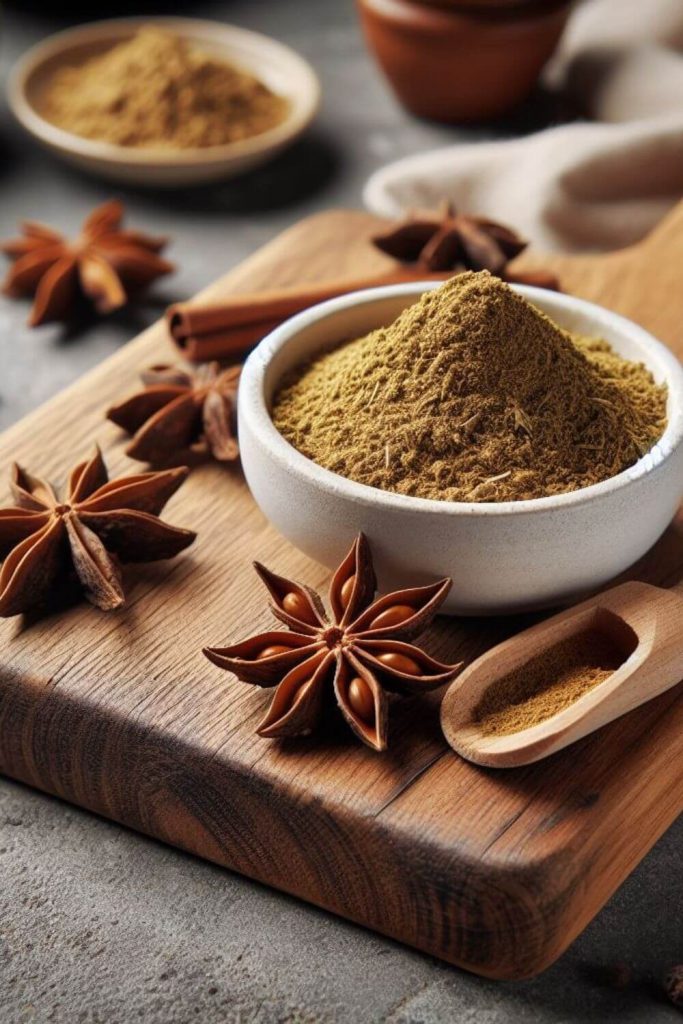
Baharat
Baharat is a Middle Eastern spice blend that adds a rich and complex flavor to dishes. While the specific ingredients can vary, common components include black pepper, cumin, coriander, cinnamon, and cloves. It’s often used in Middle Eastern and North African cuisines to season meats, stews, and also rice dishes.
While the flavor profiles aren’t identical, baharat can bring its own aromatic and spicy notes to your recipes.
Baharat Substitute for Chinese Five Spice:
Simply replace the Chinese Five Spice with an equal amount of baharat. The combination of spices in baharat, including cinnamon and cloves, can provide a warm and far-flung flavor to your dishes.
Usage Tips:
- Grilled Meats: Use baharat as a rub or marinade for grilled meats. It pairs especially well with lamb, beef, or chicken.
- Rice and Pilafs: Sprinkle baharat into rice dishes or pilafs for a flavorful side that complements various cuisines.
- Stews and Tagines: Enhance the depth of stews and tagines by incorporating baharat into the cooking process. The spices in the blend work well in slow-cooked dishes.
- Vegetarian Dishes: Elevate vegetarian dishes by adding baharat to roasted vegetables, lentils, or chickpea-based recipes.
- Sauces and Dressings: Mix baharat into sauces or dressings for an unexpected and delightful flavor boost.
Experiment with proportions to suit your taste preferences, and don’t be afraid to get creative. Baharat’s aromatic blend can add a touch of the Middle East to your culinary creations.
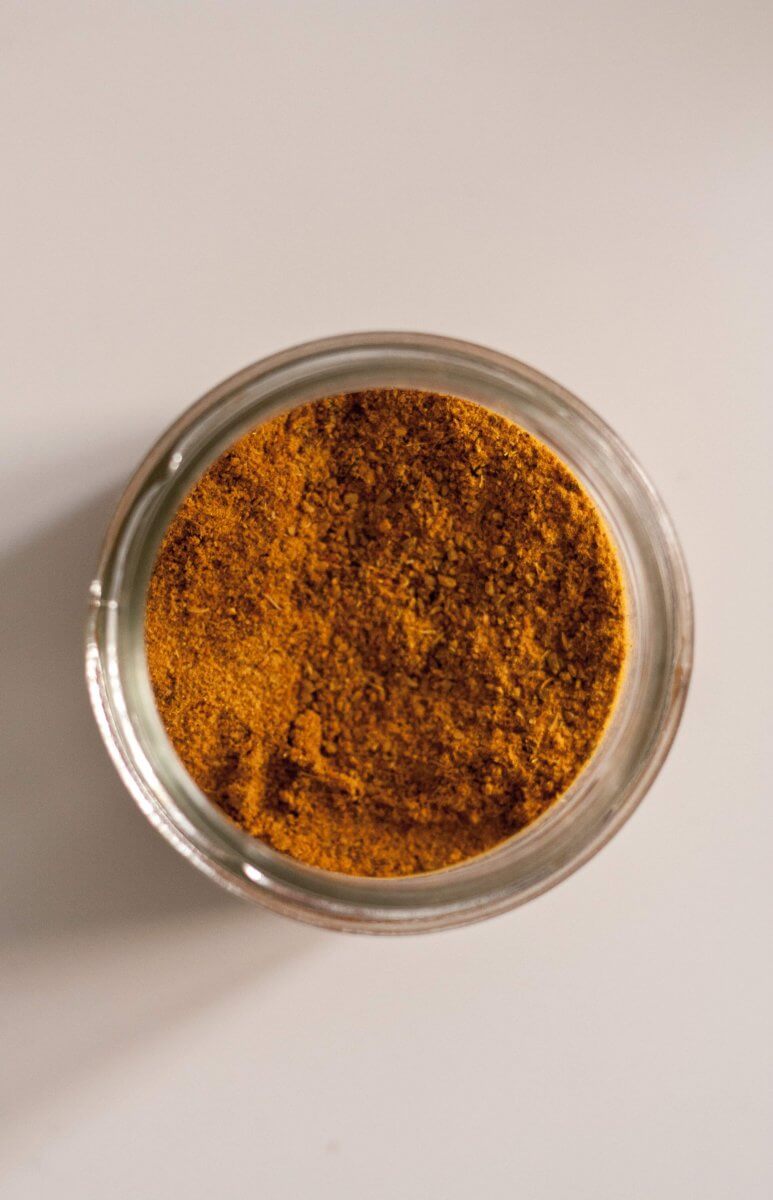
Homemade Chinese Five Spice blend
Want to make your own? Well, here’s a simple DIY recipe that will allow you to whip up your own personalized Chinese five spice blend:
Ingredients:
- 1 tablespoon ground star anise
- 1 tablespoon ground cloves
- 1 tablespoon ground Chinese cinnamon (or regular cinnamon)
- 1 tablespoon Szechuan peppercorns, toasted and ground
- 1 tablespoon fennel seeds, ground
Instructions:
- Gather all your spices together – star anise, cloves, cinnamon, Szechuan peppercorns, and also the fennel seeds.
- If your Szechuan peppercorns are not ground, toast them in a dry pan until fragrant, then grind them up.
- In a bowl, combine all the ground spices together into a fine blend.
- Once blended, give it a taste. Remember, you can adjust the ratios if needed to match your flavor preferences.
- Always store your homemade blend in an airtight container, away from heat and sunlight.
Then simply use it in marinades, rubs, or wherever your culinary creativity takes you.
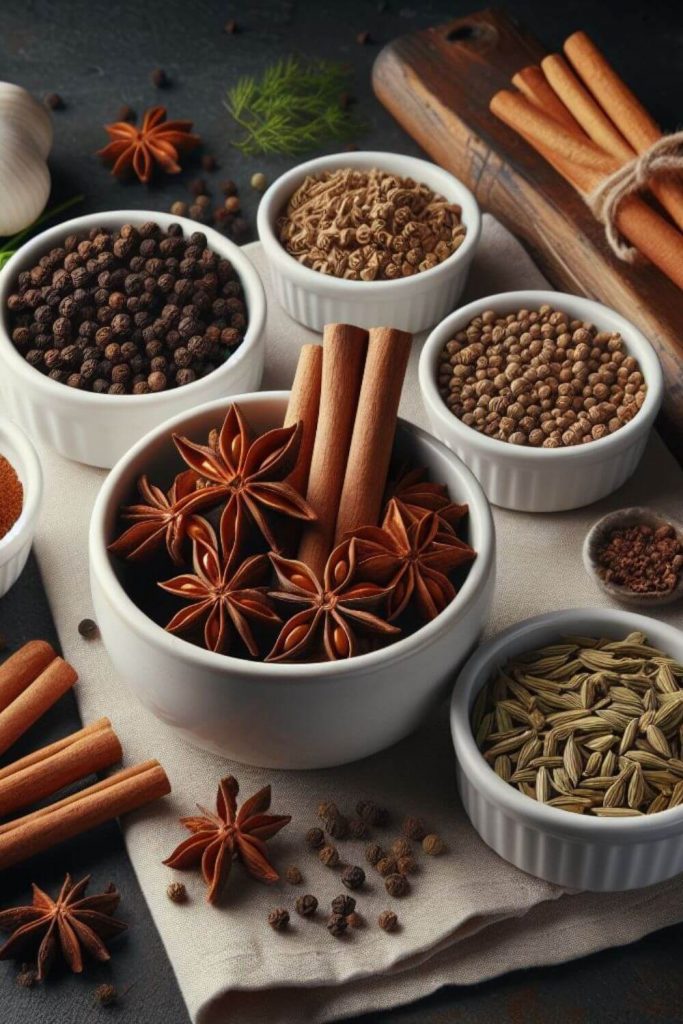
FAQs
What spices can I use to make my own Chinese Five Spice blend?
We have listed below a list of spices that complement each other and when blended together will make a fantastic Chinese Five Spice blend.
- Cinnamon, Cloves, and Fennel Blend: The dynamic trio for a sweet, warm, and slightly anise-like kick.
- Star Anise and Allspice Combo: Star anise brings that licorice flair, and allspice also adds a bit of warmth.
- Garam Masala: An aromatic mix with cumin, coriander, cardamom, cinnamon, and also cloves.
- Chinese 5 Spice Powder Minus a Component: Create your own by leaving out one spice from the traditional blend.
- Anise Seeds and Ground Ginger Fusion: Anise for the licorice touch, and ginger for the heat – a flavorful duo.
- Cinnamon and Cloves Pairing: Simple yet effective; these two can work wonders together.
- Allspice and Ginger Blend: Allspice brings warmth, and ginger adds a zesty punch.
- Szechuan Peppercorn and Ground Ginger Mix: Recreate the tingling sensation with Szechuan peppercorns and add a hint of ginger.
- Coriander, Cumin, and Cloves Trio: A savory blend with a touch of warmth and depth.
- Fennel Seeds and Ground Ginger Mix: Fennel for the anise vibe, and also ginger for that spice kick – a winning combo.
Can I substitute Chinese Five Spice for Allspice?
While Chinese Five Spice and allspice share some common warm and sweet notes, they are distinct spice blends with different flavor profiles. Chinese Five Spice is a blend of star anise, cloves, Chinese cinnamon (or cassia), Szechuan peppercorns, and also fennel seeds, offering a complex and savory-sweet taste.
On the other hand, Allspice is a single spice made from the dried unripe berries of the Pimenta dioica plant. It has a flavor reminiscent of a combination of cinnamon, cloves, and nutmeg.
If you’re in a pinch and need to substitute Chinese Five Spice with allspice, keep in mind that the flavors won’t be an exact match, but it can still add warmth and depth to your dish.
Summary for Chinese Five Spice substitutes
Okay – that’s you all sorted with a suitable substitute for Chinese Five Spice.
Here’s a quick recap on individual spices and spice blends as an alternative for Chinese Five Spice.
- Allspice: Allspice is a single spice that captures many of the warming and sweet notes of Chinese five-spice, with hints of cinnamon, cloves, and also nutmeg. It’s a readily available and versatile substitute, and you can use it in a 1:1 ratio for five-spice powder.
- Cinnamon: While not as complex as five-spice, cinnamon can add a warm, sweet flavor to your dish. Use ground cinnamon in a 1:1 ratio, but keep in mind that it won’t replicate the other four spices.
- Star anise: This star-shaped spice is the most dominant flavor in five-spice, offering a sweet licorice-like aroma and taste. You can use it whole or ground, but start with a smaller amount (about 1/4 teaspoon for 1 teaspoon of five-spice) and adjust to your taste.
- Garam masala: This Indian spice blend shares some common ground with five-spice, containing cinnamon, cloves, and fennel seeds. It also has warming notes from black pepper and cardamom. Use garam masala in a 1:1 ratio, but be aware that it can be slightly spicier than five-spice.
- Garam masala + star anise: For a closer match to five-spice, combine garam masala with a little ground star anise (about 1/8 teaspoon for 1 teaspoon of five-spice).
- Baharat: This Middle Eastern spice blend is another good option, with cinnamon, cloves, nutmeg, and black pepper. Use it in a 1:1 ratio, but be mindful that it may also have a hint of chili pepper heat.
- Homemade Chinese Five Spice blend: If you have the time and some of the individual spices, you can make your own five-spice blend (see the recipe).
We have gathered together a lot more facts on ingredients such as herbs, spices, oils, nuts, etc. if you would like to learn some more.
Or if you need to swap out another ingredient have a look at our Substitutes section.
